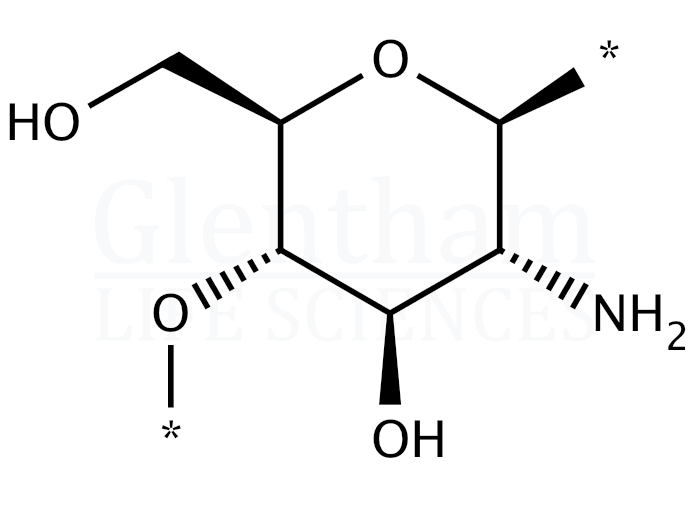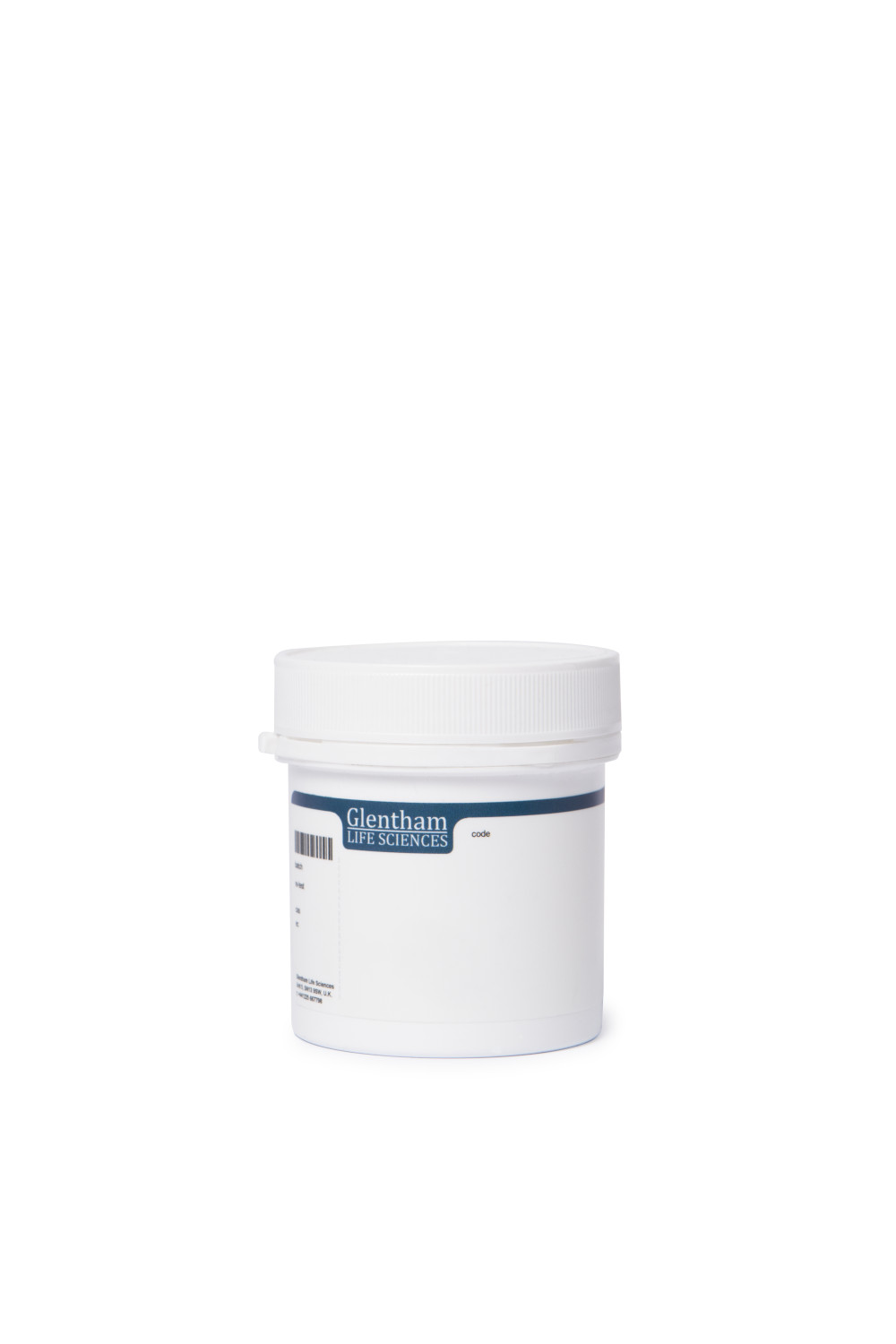Research chemicals are good quality,lead time excilent & many items are ready stock
GP5480 Chitosan (10 cps); very low molecular weight
Deacetylated chitin; Poly(D-glucosamine)


Chitosan (10 cps); very low molecular weight
$23.20
🟢 In Stock (5+)
Product code: GP5480-25g
Packaging type: plastic jar (packaging info)
Description: 100ml screw top wide opening container for solids
Material: White open neck plastic jar with tamper evident screw closure
Dimensions: 50 x 50 x 60 (mm)
Volume: 100 (ml)
UN certified: No
Weight: 18.107
Size
25g
100g
250g
500g
1kg
bulk
Dispatches: 29th April 2024
Product Description
Chitosan is a polysaccharide comprised of linked D-glucosamine and N-acetyl-D-glucosamine units. It is produced by the deacetylation of chitin, a naturally occurring polysaccharide. Chitosan is commercially used in agriculture as a biopesticide but has potential applications in the biomedical field due to its antibacterial properties. This product is derived from shrimp shell.
| Glentham Code | GP5480 |
| Product Categories | APIs, Carbohydrates, Biochemicals, Natural Products, Polysaccharides, Oligosaccharides, Chitin & Chitosan, Cosmetic Raw Materials |
| CAS RN | 9012-76-4 |
| Alternative CAS RN | - |
| EC Number | 618-480-0 |
| MDL Number | MFCD00161512 |
| Storage Temperature | +20°C |
| Shipping Temperature | Ambient |
| Harmonised Tariff Code | 3913900099 |
Top Reviews
Our happy customers
We have always had a very positive experience of working with Glentham Life Sciences. Their customer service is excellent and their stock levels & lead times are very impressive, which is important to our business and we will certainly continue to buy from them as a result
Our customers are very satisfied with the quality and delivery time.
High quality products and good support.
Glentham life sciences very high quality products company
Great service Great service! Good prices and wide range of products.
Trustworthy and reliable supply partner… Trustworthy and reliable supply partner for quality raw materials and research needs...Keep it up!!
Excellent products and amazing lead times. A definitive for any lab
Glentham lifescience. product is very good.And the quality is also very good.We are very happy with your local distributor in Pakistan.And your local distributor is doing a great job.
Our customers are very satisfied with the quality and delivery time.
Impressive experience with Glentham Life Sciences Great products, Fast shipping, Nice support, Reliable partner
A great company to work with! We have been working with Glentham since 2017 and they supply a large percentage of our raw materials. During that time both they and we have seen large growth, but we still find they have managed to retain the personal touch that we value so much. Always helpful and ready to seek out some unusual requests, Glentham also maintain very competitive prices which…
Great chemicals supplier. Many items in stock , all with high quality.
Excellent range of chemicals and… Excellent range of chemicals and buffers combined with great service and pricing.
You science and research partner! We've been working with Glentham from years now. They are very trustful, helpful solving issues and always reliable. The Customer service is always ready and very kind. Absolutely a good company to work with.
Good experience.very cooperative staff ,good items and excellent dealings with distributors.
Glentham Life Sciences products is very good quality and quickly response him
"Excellent products and amazing lead times."
Very good! Thanks, Nicholas and Sam!
Good experience . 100% Product Purification with Better Result very cooperative staff and excellent dealings with distributors
Excellent products Excellent products, great lead times and a very helpful support team
Excellent We have been working with Glentham Life Science since 2012. Most of the End- used comments evaluate high quality chemicals.
Glentham is the best company. It is a company that strives with each other for the development of the Glentham and distributor. It's a great company that provides quality products at a good price.
Successful market for Glantham in Qatar My experience with Glenthan Life Sciences is an excellent company with respect to quick reply to the customers and providing high-quality chemicals and fine chemicals. Many times we get the invoices and we make the payments and we receive the items within one week, a process that makes our customers so happy with the service particularly we are ba…
A pleasure to deal with, high quality products and a very good supply chain with speedy delivery times
The best company I have ever worked with.
Got a question for us?
Please fill in the enquiry form to contact our customer service, for technical support, or for any requests. We will get back to you as soon as possible.

